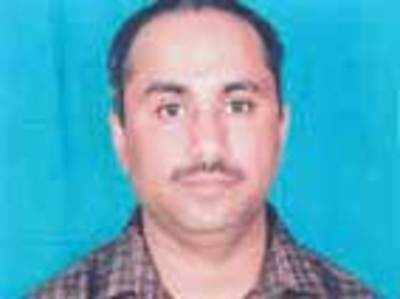Unsafe citizens would gladly pay for cleaner air

Pollution directly impacts a citizen’s disposable income. So much so that citizens would gladly contribute for any schemes to improve air quality the amount they shell out on treatment for the various side effects of pollution, like coughs, dust allergy and asthma.
This is one of the findings by DR Ravi, an environmental officer working under Karnataka State Pollution Control Board (KSPCB), of the intensive research he did on the environmental and monetary burden on the citizens due to the incessant air pollution with a special reference to Bengaluru. He earned a PhD degree from Mysore University for the research. The university conferred him the degree on April 17, five days before the world celebrated the Earth Day.
Ravi has made an attempt to capture the changes the city witnessed between 2006 and 2011. To study air pollution, he identified nine places in the city: Market area , Victoria hospital; industrial area, Peenya; commercial and residential area, Yeshwanthpur circle; traffic junction with commercial activities, Dairy circle; traffic junction surrounded by slum, Majestic area; traffic junction surrounded by commercial, residential areas, Amco batteries along with residential areas around ISEC, Khajisonnenahalli and Vijayapura. While ISEC, Khajisonnenahalli and Vijayapura were control area, the rest were non-control area or study area.
His thesis finds that there is an alarming rise in total suspended particulate matter (TSPM) and respirable suspended particulate matter (RSPM) in the air. TSPM and RSPM are touching close to five times higher than the average air ambient quality standard in certain parts of city, according to his finding which also concludes that the city is steadily turning unsafe due to this.
It was found that the TSPM and RSPM levels were alarming in the study areas. While Vijaypura recorded 11.26 µg/m3 (micrograms per cubic meter air) and 5.54 µg/m3 respectively, Khajisonnenahalli recorded 9.82 µg/m3 and 4.25 µg/m3 respectively. ISEC recorded 45.55 µg/m3 and 11.42 µg/m3. Dairy Circle recorded 141.27 µg/m3 and 67.29 µg/m3, Peenya Industrial Area recorded 273.9 µg/m3 and 104.4 µg/m3, Yeshwanthpur a recorded 265.7 µg/m3 and 98.3 µg/m3, Majestic recorded 185.9 µg/m3 and 64.7 µg/m3, Amco batteries recorded 191.3 µg/m3 and 68.8 µg/m3 respectively.
Further households in these areas were also surveyed on various parameters including age, travel time, ailments and expenditure incurred. It was found that residents in the study area suffered from cough, dust allergy and asthma. Those in highly polluted area spent maximum money on their health and it decreases with a reduction in air pollution. While highly polluted area had maximum willingness to pay (WTP) of Rs 2,154 (Amco Batteries), Rs 2,564 (Yeshwanthpur) and Rs 2,095 (Peenya Industrial Area) per individual, it is lower in other areas.
“Pollution is an important challenge we all are facing. So is the importance of cost incurred by an individual. Hence if the pollution and its adverse impact on health is told through economic impact at micro and macro levels it will create awareness and can help check pollution as an individual checks at his level by thinking that the money he spent on his ailments could have been a better investment if it was not pollution. It makes an individual do his bit in checking pollution. I’m very happy as the research is acknowledged,” Ravi told BM.
Elaborating the economic impact due to health implications, the pollution can be brought down as an awareness using cost factors was more effective and impactful at an individual level, which prompted his research, Ravi said.
“It is a unique effort. He has put extra efforts to create awareness among the people as a student of environmental engineering. He has made an attempt to address the pollution issue, which every Bengalurean is facing, in a different angle taking the economic side of the pollution in his five-year research,” Dr Krishna Raj, Ravi’s guide from Institute for Social and Economic Change, told Bangalore Mirror.
Ravi who works from the KSPCB headquarters, is also an MTech degree holder in environment engineering.
GALLERIES View more photos






















